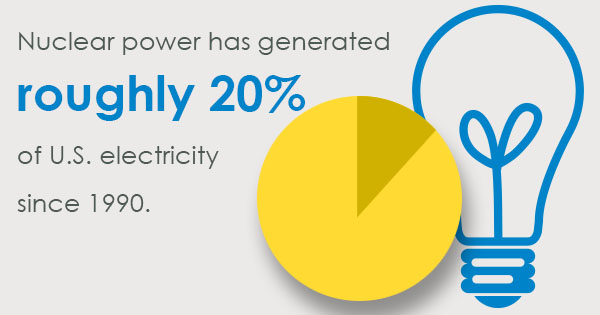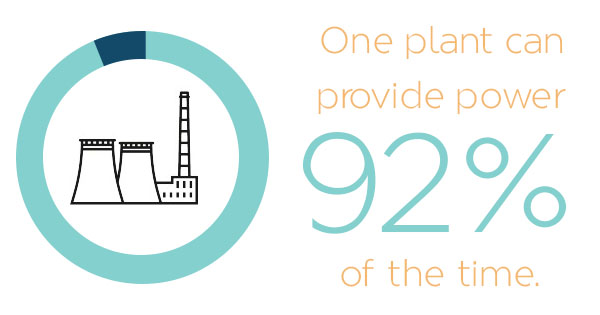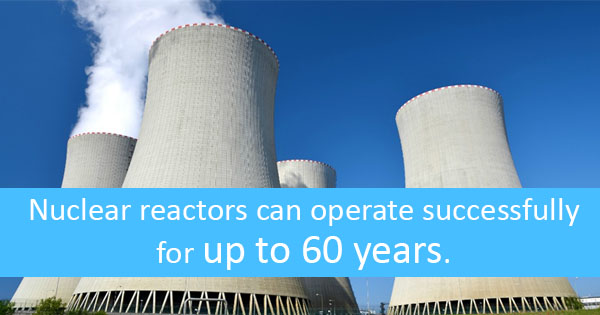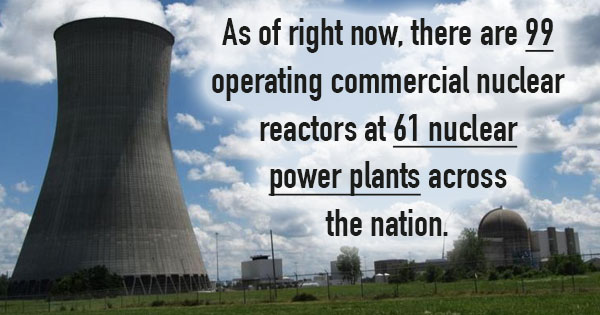Nuclear Construction Paving the Way for Better Use of Alternative Energy
 There are 100 commercial nuclear reactors operating within 60 power plants in the U.S. alone. On average, these reactors are about 34 years old, while the oldest, Nine Mile Point Unit 1 and Oyster Creek, have been in use since December 1969.
There are 100 commercial nuclear reactors operating within 60 power plants in the U.S. alone. On average, these reactors are about 34 years old, while the oldest, Nine Mile Point Unit 1 and Oyster Creek, have been in use since December 1969.
Although the nation has been investing in energy — specifically clean, alternative forms — for quite some time, there is still a high demand for non-fossil fuel energy sources.
Investing in nuclear energy is clearly nothing new, but despite the age of the existing nuclear energy plants and reactors, there are new reactors being built even today.
In June 2016, Watts Bar Unit 2 began its initial operation in Tennessee. This is the first nuclear reactor to come online in the U.S. since 1996. It is expected to begin its commercial operations by the end of this year.
Additionally, Vogtle Units 3 and 4 are currently being constructed in Georgia and Virgil C. Summer Units 2 and 3 are being built in South Carolina.
Since the shutdown of four reactors in 2013, and since Vermont Yankee was removed from service in 2014, the U.S. nuclear industry has dipped. But as of recently, it’s been making a comeback.
Nuclear power has generated roughly 20% of U.S. electricity since 1990. As the power plants continue to undergo modifications, they have been able to increase their capacities and shorten their offline times.
While there are some risks in nuclear energy investment, the rewards are much greater with proper monitoring. Nuclear power plant investments could drastically reduce the global need for fossil fuels, which have been proven to harm the environment and are available in finite amounts.
While the U.S. only holds five percent of the world’s population, it burns nearly a quarter of the Earth’s fossil fuels, creating greenhouse gasses, as well as air pollutants such as nitrogen oxides, sulfur dioxide, volatile organic compounds, and heavy metals.
Nuclear energy is a contained form of energy generation, and therefore does not produce the same types of pollutants that harm the environment. Of course, nuclear reactions do create radioactive byproducts, which must be monitored closely.
Regular radiation detection and measurement is especially important when it comes to nuclear energy investment. While the radiation can be dangerous, if controlled, nuclear energy is some of the most effective forms of energy generated today.
____________________________



 Here’s something scary: within a span of two months in 2014, drones flew around France’s nuclear facilities at least 32 times. We still don’t know who was responsible, which is exceptionally worrisome as commercial drones are becoming a fact of life.
Here’s something scary: within a span of two months in 2014, drones flew around France’s nuclear facilities at least 32 times. We still don’t know who was responsible, which is exceptionally worrisome as commercial drones are becoming a fact of life.
 Overall, a slim majority of Americans — 51% — favor the use of nuclear energy for domestic electrical use, while 43% oppose it. No doubt this is thanks in part to the many myths floating around about the use of nuclear power. In order to prevent any misconceptions that might be preventing the U.S. from
Overall, a slim majority of Americans — 51% — favor the use of nuclear energy for domestic electrical use, while 43% oppose it. No doubt this is thanks in part to the many myths floating around about the use of nuclear power. In order to prevent any misconceptions that might be preventing the U.S. from  The U.S. Department of Energy’s Loan Programs Office announced in December of 2014 that it opened a $12.6 billion loan guarantee for advanced nuclear technologies. This includes small modular reactors, molten salt reactors, and breeder reactors.
The U.S. Department of Energy’s Loan Programs Office announced in December of 2014 that it opened a $12.6 billion loan guarantee for advanced nuclear technologies. This includes small modular reactors, molten salt reactors, and breeder reactors.